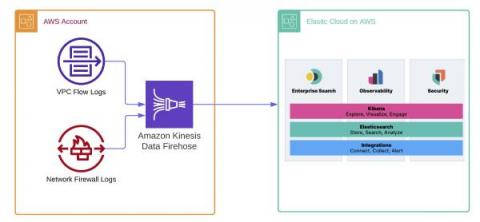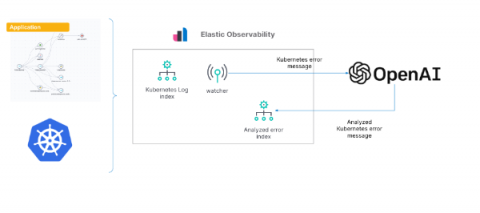Operations | Monitoring | ITSM | DevOps | Cloud
Elastic
Unleash the power of Elastic and Amazon Kinesis Data Firehose to enhance observability and data analytics
As more organizations leverage the Amazon Web Services (AWS) cloud platform and services to drive operational efficiency and bring products to market, managing logs becomes a critical component of maintaining visibility and safeguarding multi-account AWS environments. Traditionally, logs are stored in Amazon Simple Storage Service (Amazon S3) and then shipped to an external monitoring and analysis solution for further processing.
Elastic Enterprise Search 8.8: Easy AI-powered search for your enterprise
Elastic Enterprise Search 8.8 seamlessly bundles new Elastic developed semantic search capabilities with an expanding catalog of open code database and storage connectors. Additionally this release adds rich capabilities to measure and simplify adding features to your search application. These new capabilities allow customers to: Elastic Enterprise Search 8.8 is available now on Elastic Cloud — the only hosted Elasticsearch offering to include all of the new features in this latest release.
Elastic Unveils the Elasticsearch Relevance Engine for Artificial Intelligence
Gain insights into Kubernetes errors with Elastic Observability logs and OpenAI
As we’ve shown in previous blogs, Elastic® provides a way to ingest and manage telemetry from the Kubernetes cluster and the application running on it. Elastic provides out-of-the-box dashboards to help with tracking metrics, log management and analytics, APM functionality (which also supports native OpenTelemetry), and the ability to analyze everything with AIOps features and machine learning (ML).
Challenges of observing Kubernetes: Understanding a complex and dynamic system
As technology evolves in the enterprise, oftentimes the processes and tools used to manage it must also evolve. The increased adoption of Kubernetes has become a major inflection point for those of us in the monitoring and management side of the IT operations world. What has worked for decades (traditional infrastructure monitoring) has to be adjusted to the complexity and ephemeral nature of modern distributed systems where Kubernetes has a prime role.
Trace your Azure Function application with Elastic Observability
Adoption of Azure Functions in cloud-native applications on Microsoft Azure has been increasing exponentially over the last few years. Serverless functions, such as the Azure Functions, provide a high level of abstraction from the underlying infrastructure and orchestration, given these tasks are managed by the cloud provider. Software development teams can then focus on the implementation of business and application logic.
The impact of NWDAF on telco service providers: Embracing vendor agnostic data analytics
Network Data Analytics Function (NWDAF) is a key component in 5G networks, designed to collect, analyze, and deliver valuable insights to service providers. NWDAF provides an unbiased, vendor-vendor agnostic view of the network, expanding telco visibility beyond traditional use cases. As network complexities grow, service providers require unbiased and accurate data to make informed decisions, driving the demand for vendor agnostic data analytics.
The Met Office gains valuable data insights to make informed decisions with Elastic
Using AIOps effectively with Elastic Observability
Over the past several years, one topic that has become of increasing importance for DevOps and site reliability engineering (SRE) teams is AIOps. Artificial intelligence for IT Operations (AIOps) is the application of artificial intelligence (AI), machine learning (ML), and analytics to improve the day-to-day operational work for IT operations teams.











